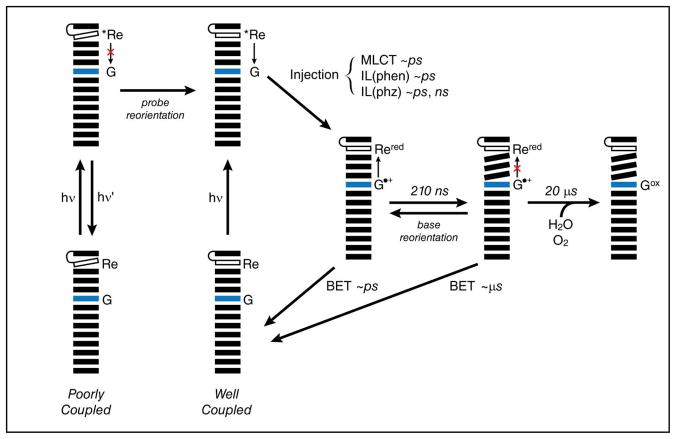Figure 7.
The proposed model for the oxidation of guanine by photoexcited [Re(CO)3(dppz)(py′-OR)]+. Photoexcitation in the poorly coupled system results in emission (hν′) or non-radiative decay to the ground state. Photoexcitation in the well-coupled system results in charge injection over an arbitrary distance to form reduced [Re(CO)3(dppz)(py′-OR)]0 (Rered) and the guanine radical cation (G•+). During the excited state lifetime of the complex, the poorly coupled system may undergo reorientation, allowing charge injection. From the charge-separated state, facile back electron transfer (BET) competes with charge migration and trapping, resulting either in no reaction or the formation of permanent oxidation products. Base motions may result in isolation of the injected charge, favoring the trapping pathway.

